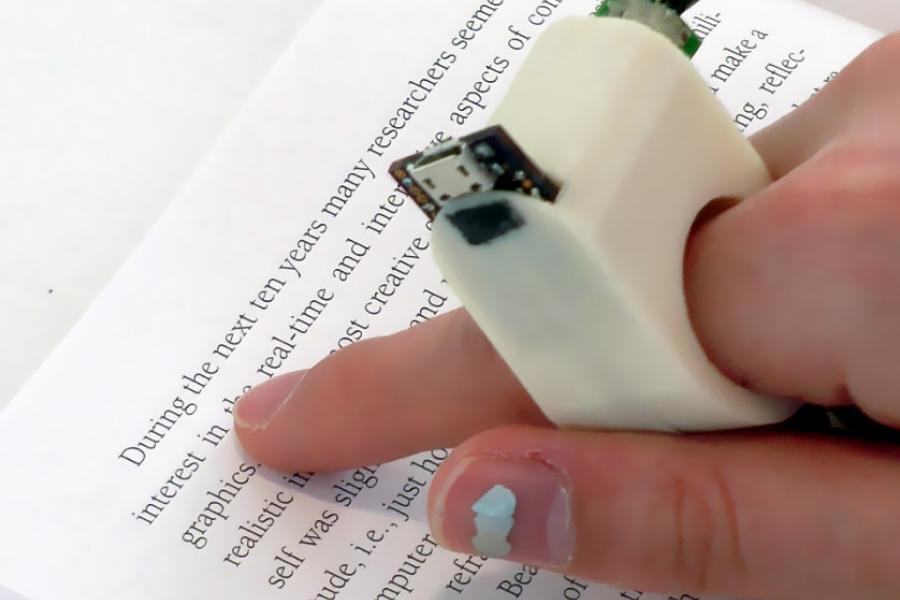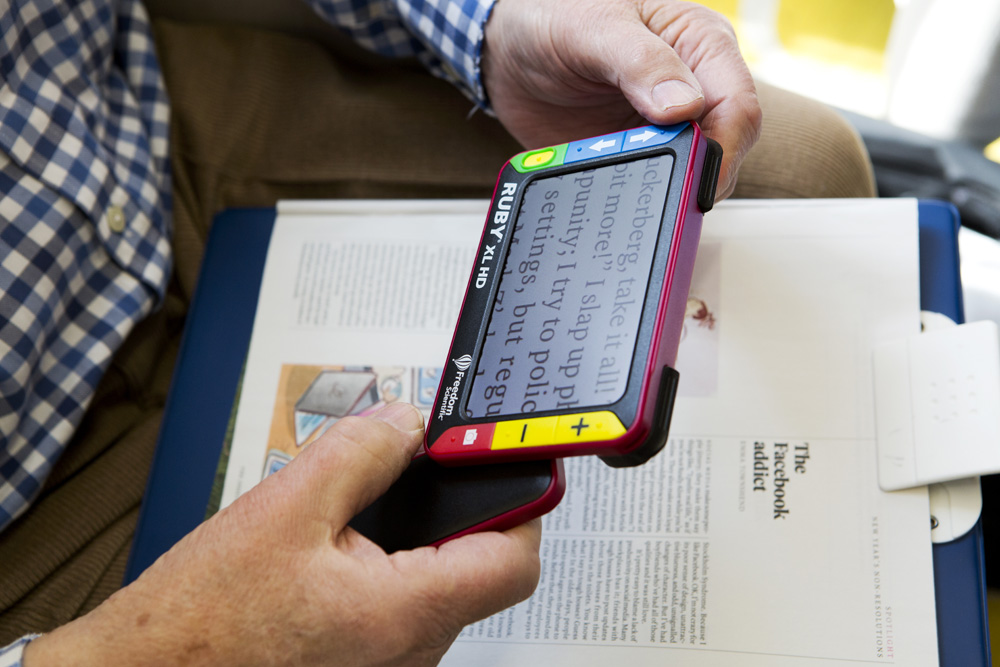Empowering Self-reliance With Assistive Innovation for the Blind
The combination of assistive innovation into the lives of individuals with aesthetic problems represents a significant development in promoting freedom and self-sufficiency. From ingenious screen readers to sophisticated smart walking sticks, these tools not only boost everyday navigation and interaction however additionally encourage individuals to engage meaningfully in numerous aspects of life. As we discover the myriad benefits and real-world applications of these innovations, it becomes important to check out the hidden aspects that add to their effectiveness and the possibility for future developments in this essential area.
Introduction of Assistive Technology

The advancement of assistive modern technology is based in concepts of inclusivity and empowerment. Advancements in software program, hardware, and sensory improvements offer users with alternatives customized to their details requirements. From display visitors that convert message to speech, to responsive tools that share information through touch, these tools change the means people engage with their surroundings.
Along with useful applications, assistive modern technology promotes higher social incorporation and participation in different sectors, consisting of education and learning and work (Screen readers for the blind). As research and growth remain to advance, the capacity for assistive technology to better improve the lives of aesthetically damaged people stays promising, paving the method for a much more fair culture where everybody can flourish
Sorts Of Assistive Gadgets
A range of assistive gadgets have arised to sustain individuals with aesthetic disabilities, each designed to meet specific needs and improve daily functioning. These tools vary from low-tech solutions to modern innovations, providing diverse alternatives for individuals.
Low-tech devices consist of magnifiers and large-print materials that aid in reading and writing. Braille devices, such as Braille slates and stylus pens, allow responsive reading and communication. Orientation and movement aids, like white canes, aid individuals navigate their environment safely.
On the greater end of the range, electronic magnification systems and screen readers offer significant support. Digital magnifiers allow individuals to enlarge text and images on screens, while display visitors transform digital content right into synthesized speech, promoting access to information on computer systems and smartphones.
Smartphone applications also play a vital role, providing functions like text acknowledgment and navigating support. Wearable technology, such as clever glasses equipped with increased reality, is becoming an appealing tool to improve situational understanding.
Benefits of Assistive Technology
The combination of assistive modern technology considerably enhances the lifestyle for individuals with visual disabilities. These technologies equip users by advertising self-reliance, enabling them to navigate their settings more properly and carry out everyday tasks with greater convenience. Display visitors and magnification software application enable individuals to access electronic details, cultivating expert and educational opportunities that may have formerly been out of reach.
Moreover, assistive tools such as wise walking sticks and weblink general practitioners applications supply real-time navigation aid, improving movement and security. This enhanced autonomy not just improves self-worth yet likewise urges social involvement, enabling users to get involved more completely in their neighborhoods.
Assistive technology additionally helps with communication, aiding customers get in touch with others via voice recognition and text-to-speech applications. This capability is crucial for keeping relationships and accessing essential details.
Additionally, the modification choices readily available with many assistive technologies guarantee that individuals can customize gadgets to their details demands, even more enhancing use and effectiveness. Generally, the benefits of assistive modern technology for people with visual problems are profound, advertising an extra inclusive society where every person can pursue their objectives and ambitions.
Situation Studies and Success Stories
Highlighting the transformative impact of assistive technology, various instance research studies show exactly how individuals with aesthetic problems have actually successfully integrated these tools into their lives. One compelling instance includes a college student that made use of display reading software to browse on-line resources and scholastic products effectively. This technology not only promoted her education and learning however likewise boosted her self-confidence in joining discussions and group projects.
An additional study includes a professional who employs a mobile phone application created for navigation and object recognition. By utilizing this app, he has actually gained back autonomy in both his individual and workplace, enabling him to commute individually and engage with associates a lot more efficiently.
In addition, a senior citizen shared her experience with braille e-readers, which enabled her to access a huge range of literary works and stay linked with her area through publication clubs.
These success tales underscore the crucial function of assistive modern technology in promoting independence, boosting lifestyle, and promoting social assimilation for individuals with aesthetic impairments (Screen readers for the blind). By embracing these ingenious devices, users can get rid of difficulties and seize chances that add to their specialist and personal gratification

Future Patterns in Assistive Technology
Development in assistive innovation is positioned to redefine the landscape of assistance for people with aesthetic disabilities. Emerging patterns highlight the integration of synthetic knowledge (AI) and maker understanding, which enhance the capability of gadgets that aid with navigation and information access. For example, AI-driven applications are now with the ability of analyzing aesthetic data in real-time, allowing customers to engage with their environment a lot more separately.
Moreover, the advancement of wearable technology is progressing rapidly. Smart glasses furnished with increased truth (AR) can provide audio summaries of environments, transforming exactly how users connect with public rooms. These gadgets not only promote freedom yet likewise foster social addition.
In Addition, the Internet of Things (IoT) is making homes smarter, permitting seamless connectivity between assistive tools and day-to-day home appliances. This connectivity equips customers by enabling voice-activated controls and computerized responses tailored to individual needs.
Verdict
In final thought, assistive modern technology plays a critical duty in equipping individuals with aesthetic disabilities by boosting sight test their independence and this website involvement with their environments. The diverse range of applications and devices offered not just promotes navigating and communication however additionally advertises social integration and possibilities for individual and specialist growth. As improvements proceed in this field, the capacity for enhancing the lifestyle for those with visual problems will certainly broaden, cultivating better freedom and empowerment.
